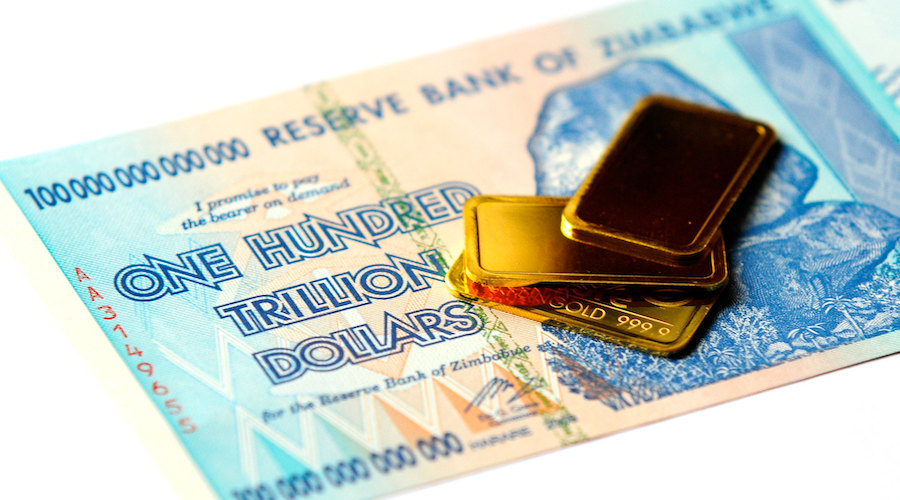
Zimbabwe’s new central bank Governor John Mushayavanhu is building up the nation’s gold reserves to help support the ZiG currency, taking steps that have so far helped curb exchange-rate volatility and an inflation spiral.
“In the 100 days that I have been in office we have increased those reserves by about 30%. We are now on about $370 million worth of reserves,” Mushayavanhu told Bloomberg in an interview from his office in the capital, Harare. “These have been increased through royalties that we are collecting from mining companies, we are making steady progress. By the time we get to the end of the year we should be talking of no less than three tons of gold.”
The ZiG – short for Zimbabwe gold — is the nation’s sixth attempt at having a functioning local currency in the last 15 years. It was launched on April 5 backed by 2.5 tons of gold and $100 million in foreign currency reserves, replacing the Zimbabwean dollar that had lost 80% of its value against the greenback in 2024. The rapid decline saw locals dump it for the US dollar.
The mineral-rich southern African nation has also scrapped the issuance of gold coins, which it introduced in 2022 as a store of value, to further boost its reserves. Zimbabwe is among several African nations, including Uganda, Nigeria and Madagascar which are either shoring up their gold holdings or considering doing so to protect their currencies and fight inflation.
An increase in reserves will enable the central bank to issue more ZiG currency and bring it closer to its target of ending the nation’s reliance on US dollars.
Mushayavanhu, has committed not to print any ZiG unless the central bank has the reserves to back it, as past currency collapses were linked to increased money supply as the central bank issued debt to finance government spending.
The governor said the ZiG will become the nation’s sole currency once all the fundamentals are right. President Emmerson Mnangagwa suggested earlier this month that could be by 2026.
“If we can achieve it in two years, why not? I don’t see any problem with that,” said Mushayavanhu.
The Bankers Association of Zimbabwe, which represents 19 lenders, has said it backs adoption of the ZiG as the sole currency, ahead of an initial 2030 deadline, should inflation remain low and reserves rise.
The ratio of US dollars used in the economy has already fallen to 80% from 85%, while local currency use has risen to 20% from 15% since the ZiG’s launch, according to Mushayavanhu. “We are on a de-dollarization journey.”
Still, the governor sees risks to the economic stability arising from severe dry weather.
“The number one risk is the El-Nino drought, which is one of the worst droughts ever,” said Mushayavanhu. “It means we will require more forex to import staple crop and that might put pressure on the exchange rate.”
The ZiG was unchanged at 13.75 per dollar on Tuesday, according to data posted on the central bank’s website.
(By Ray Ndlovu and Godfrey Marawanyika)
Comments